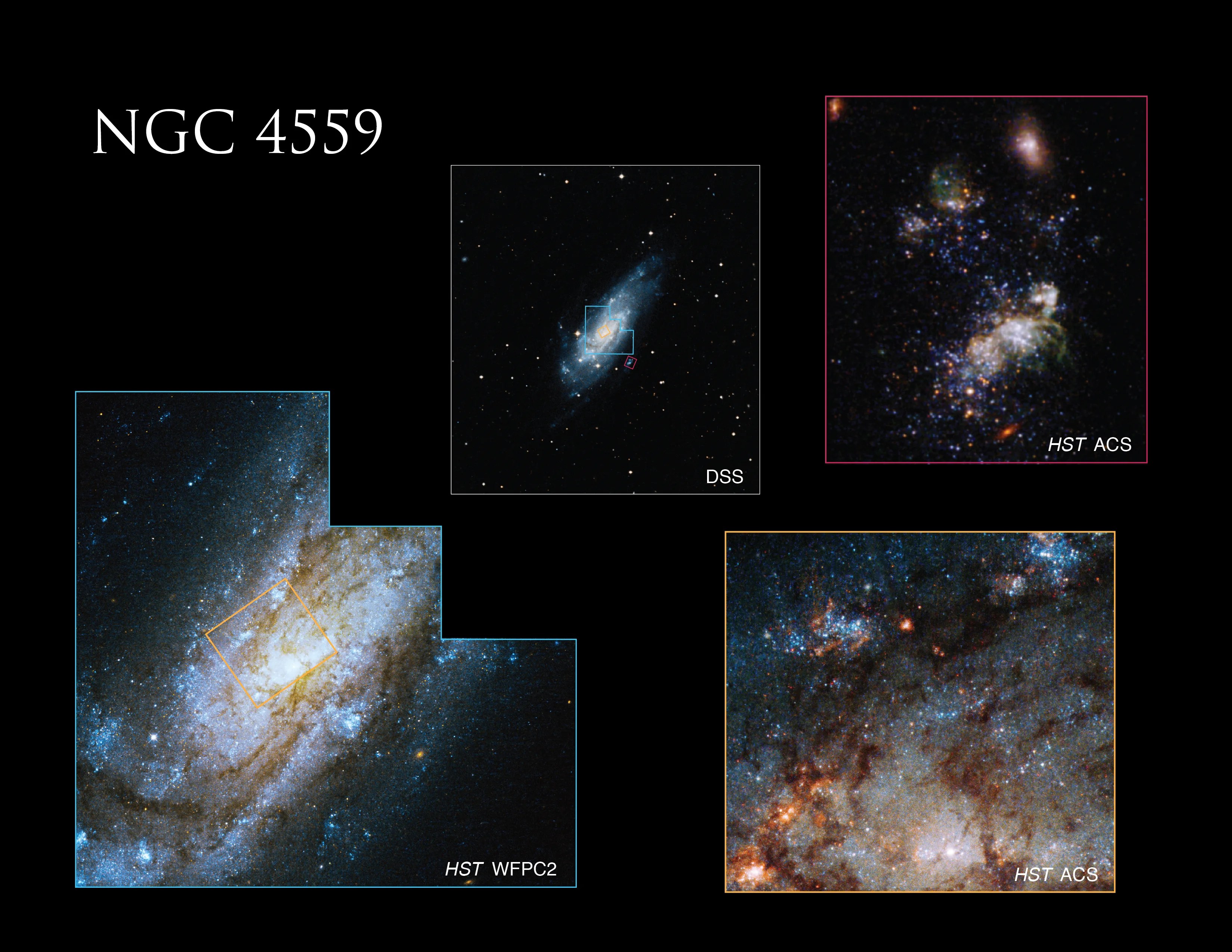
Hubble Caldwell 36 Inset
At top center, a ground-based image of Caldwell 36 (NGC 4559) from the Digitized Sky Survey (DSS) includes colored boxes showing some of the areas targeted by Hubble. The image at bottom left, taken by Hubble’s Wide Field and Planetary Camera 2 (WFPC2), shows the core of the galaxy. In the WFPC2 image, a smaller, orange square defines the area covered in an even closer view of the galaxy’s core taken by Hubble’s Advanced Camera for Surveys (ACS), shown in the bottom right. The image at top right, also taken by ACS, features a large star-forming complex in the outskirts of the galaxy, as well as a dwarf galaxy (the fuzzy, reddish object near the top) that might be an orbiting companion of Caldwell 36. All the Hubble images include visible and infrared light.Credits: Ground-based image: Digitized Sky Survey; Hubble WFPC2 image: NASA, ESA, and S. Smartt (The Queen's University of Belfast); Hubble ACS images: NASA, ESA, and R. Soria (National Astronomical Observatories of China); Processing: Gladys Kober (NASA/Catholic University of America)
